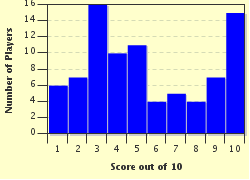Quiz Answer Key and Fun Facts
1. The best teacher is experience and not through someone's distorted point of view".
Every road trip starts with a single step, or turn of the automobile wheel. Jack Kerouac, who became a perhaps unwilling spokesperson for the Beat generation began his life in the eastern United States in a very un-hip town. Which one was it?
2. "Somewhere along the line the pearl would be handed to me."
Early in "On the Road" Sal Paradise, the narrator, meets Dean Moriarty. When Moriarty invites Sal to San Francisco, Paradise decides to go on the road. Moriarty is patterned after a real person. Which of these choices is it?
3. "The air was soft, the stars so fine, the promise of every cobbled alley so great, that I thought I was in a dream."
"On the Road" became such a literary sensation in the 1960s and '70s that publisher Penguin was hard-pressed to print enough copies to keep up with the demand. Making a movie of the book would seem like an easy extension of its popularity. In fact, a well-known director bought the rights to it in 1979. Who was he?
4. "The whole universe was crazy and cock-eyed and extremely strange."
Another Beat and postmodern author who traveled in Kerouac's circle of friends was William S. Burroughs. Which of these is considered one of his best novels?
5. "Sal, we gotta go and never stop going 'till we get there."
"Where we going, man?"
"I don't know but we gotta go."
On one of Sal and Dean's trips across the country they decided to stop in Detroit, Michigan to look for Dean's father. Where was Dean's father?
6. "I don't know. I don't care what I'm doing. Can I go back east with you?"
Dean Moriarty's 16-year-old wife, Marylou is described in "On the Road" as pretty but dumb and of easy virtue. Who played her in the movie?
7. "I know the look on your face. You're sick of me and you're sick of the baby. Do you realize how much I've given up for you?"
Another cast-off from Moriarty's life was his second wife and the mother of his child. What was the character's name?
8. "The only people for me are the mad ones...the ones who never yawn or say a commonplace thing, but burn, burn, burn like fabulous yellow roman candles exploding like spiders across the stars."
Though "On the Road" was a story about Sal Paradise, Dean Moriarty was a major influence on Paradise and the book in general. It became a standout role in the movie. Who was the actor who played the role of Moriarty?
9. "What is that feeling when you're driving away from people and they recede on the plain till you see their specks dispersing? It's the too-huge world vaulting us, and it's good-bye. But we lean forward to the next crazy venture beneath the skies."
During a trip to Mexico City Sal became "delirious and unconscious" but Dean abandoned him there to return to the U.S. What was Sal suffering from?
10. "We lay on our backs, looking at the ceiling and wondering what God had wrought when He made life so sad."
As the movie ended Sal Paradise (Jack Kerouac's alter ego) started to do what he talked about doing all along: writing. What did he write on?
Source: Author
CmdrK
This quiz was reviewed by FunTrivia editor
kyleisalive before going online.
Any errors found in FunTrivia content are routinely corrected through our feedback system.

